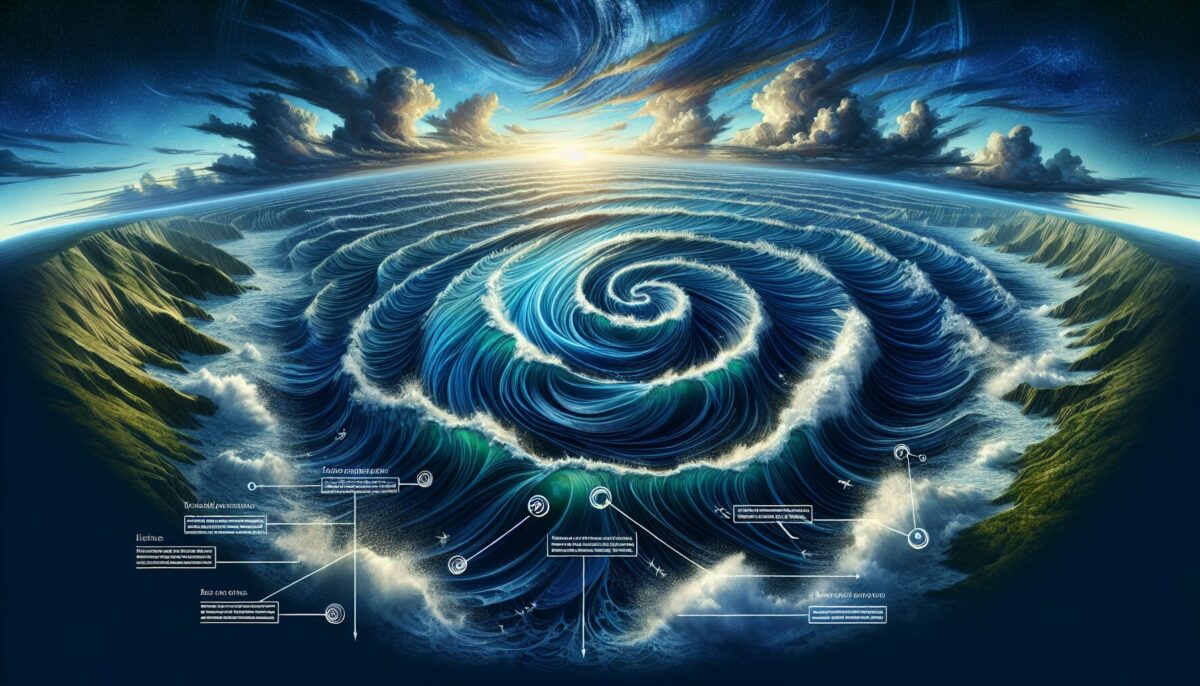Life on Earth is more tied to the ocean than most people realize. While we marvel at the serene blue surface, massive interactions are happening beneath, quietly influencing our climate, our navigation routes, and even the marine life that thrives underneath. One of the most significant oceanic phenomena are the ocean currents. Like conveyor belts of the seas, they continuously move water and heat, sinking and rising as they run both horizontally and vertically. Let’s immer—pun intended—in this in-depth look at the phenomenon of ocean currents and the great sway they hold over our daily life. (Source: NOAA)
Understanding the Mechanics of Ocean Currents
Ocean currents are persistent, predictable, and driven primarily by the wind. Another driver is the coriolis effect, stemming from the Earth’s rotation causing the currents in the North Hemisphere to swerve to the right and the currents in the South Hemisphere to swerve to the left. This creates a cyclical motion known as “gyres”. To truly understand currents, we need to comprehend the two types: surface and deep.
Surface Currents
Surface currents comprise about 10% of the ocean water, and are confined to about 400 meters from the sea surface. They’re primarily driven by global winds and gyres, forming a network of waterways across the high seas. The strength, direction, and temperature distribution of these currents play a significant role in regulating the Earth’s climate.
Deep Water Currents
Roughly 90% of the ocean water is part of deep water or thermohaline currents. These currents are the result of temperature differences (thermal) and salinity gradients (haline). Cold and salty water tends to sink, while warmer, less dense water rises, creating a global “conveyor belt” that could take up to 1000 years to complete a full cycle.
The Impact of Ocean Currents on Climate
Ocean currents have a remarkable impact on our planet’s climate. The Gulf Stream, for example, transports warm tropical water to the North Atlantic, attributing Western Europe with a warmer climate than it would typically have at that latitude. The El Niño phenomenon, characterized by an unusual warming in the Pacific Ocean, can trigger extreme weather events across the globe due to its influence on atmospheric currents. Meanwhile, as we fill our atmosphere with excess carbon dioxide from burning fossils fuels, the Southern Ocean helps take up around 40% of this extra CO2, mitigating some impacts of climate change. (Source)
The Role of Ocean Currents in Navigation and Shipping
Currents have played an indispensable role in human history and navigational endeavours, guiding early explorers from Christopher Columbus to Vasco da Gama. Modern shipping lanes often take advantage of these currents – for instance, the Agulhas current off the coast of Africa allows ships to travel faster and thus save fuel.
Ocean Currents and Marine Life
Ocean currents also shape the distribution and diversity of marine life, making them critically essential for sustaining marine ecosystems. For example, the nutrient-rich upwelling areas generate huge amounts of phytoplankton, forming the basis of the marine food web. However, current changes can have serious impacts on marine life. Over the past few decades, scientists have observed changes in current systems potentially linked to climate change, a shift that might affect the distribution, reproduction, and survival of marine species, thereby impacting the health of our oceans. Find out more about the impact on marine life here.
Conclusion
Within the vast expanse of the oceans, currents work tirelessly, silently, shaping the Earth’s climate and the distribution of life throughout the world. As our climate changes, better understanding and monitoring these intricate ocean highways will become increasingly vital. Although their influence is vast and complex, one thing is certain: without the complex world of ocean currents, our Blue Planet would be a fundamentally different and far less habitable place.
